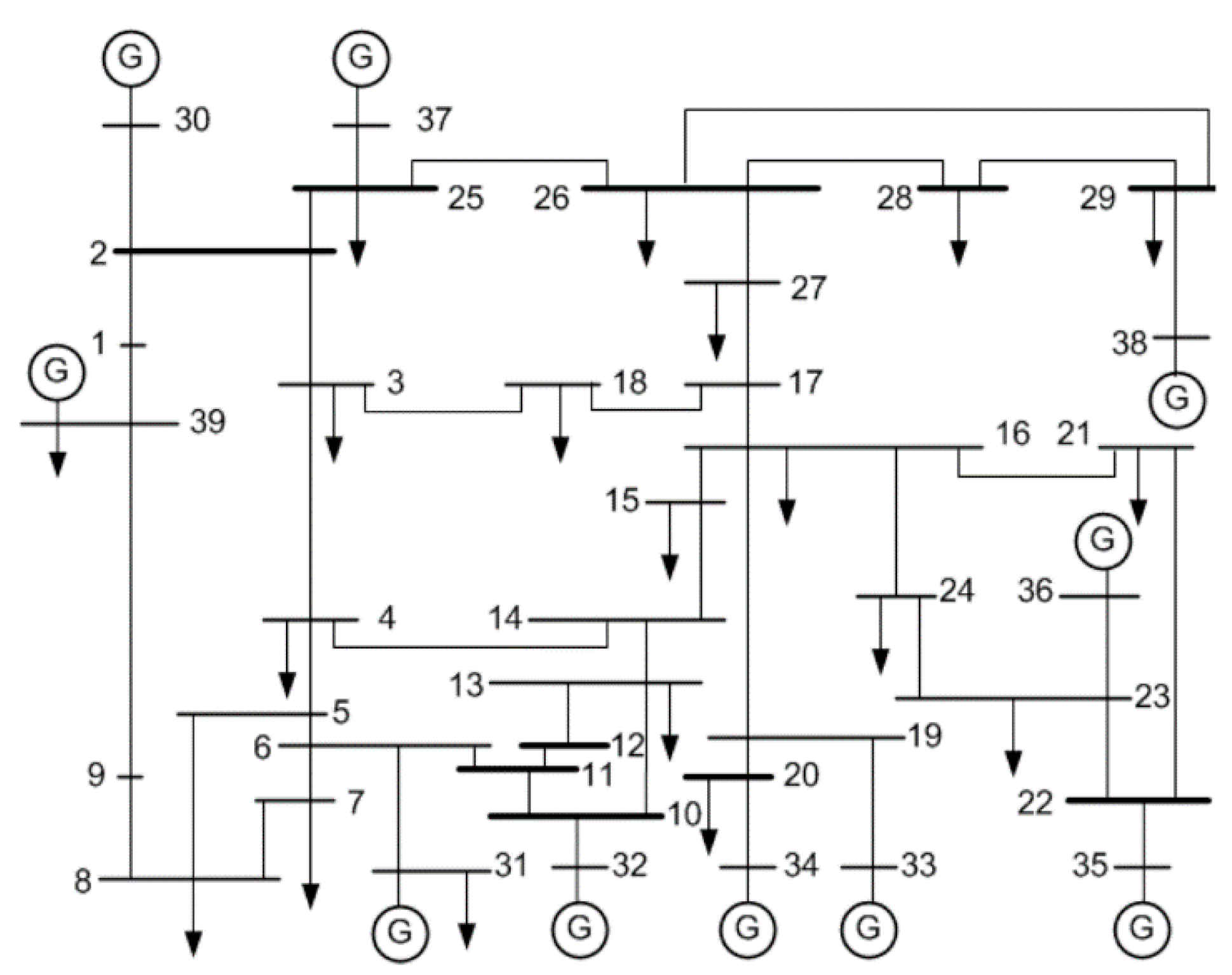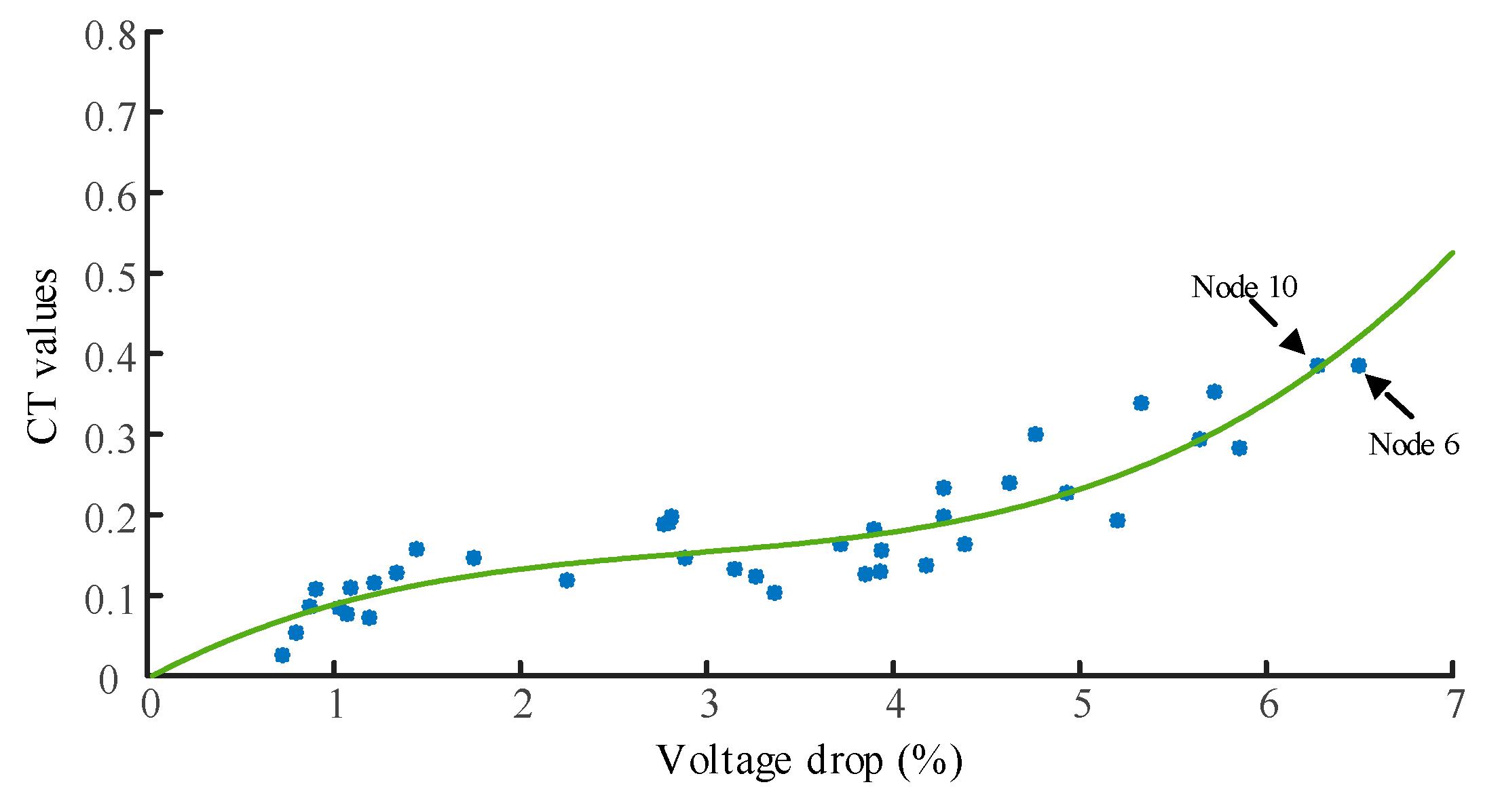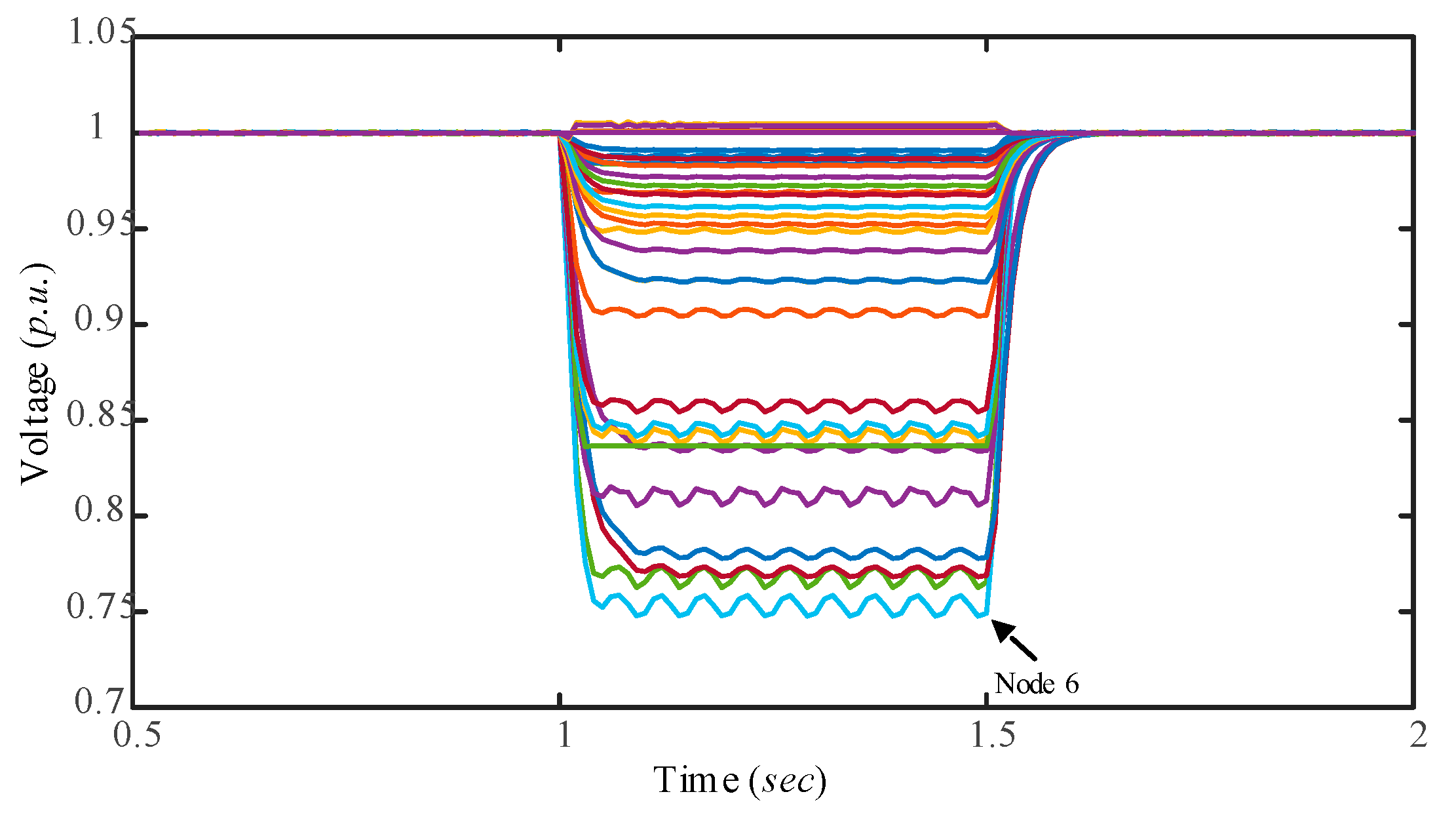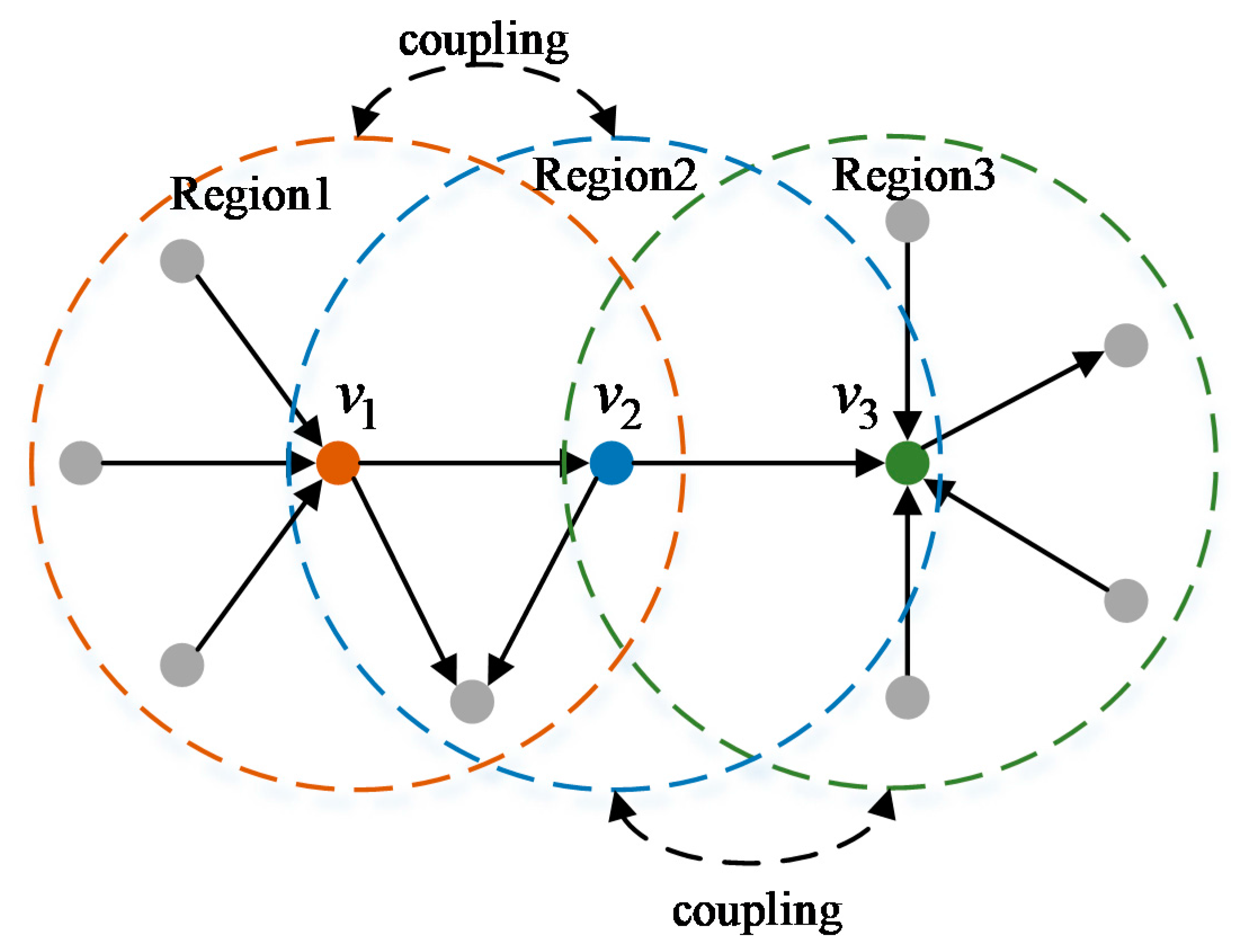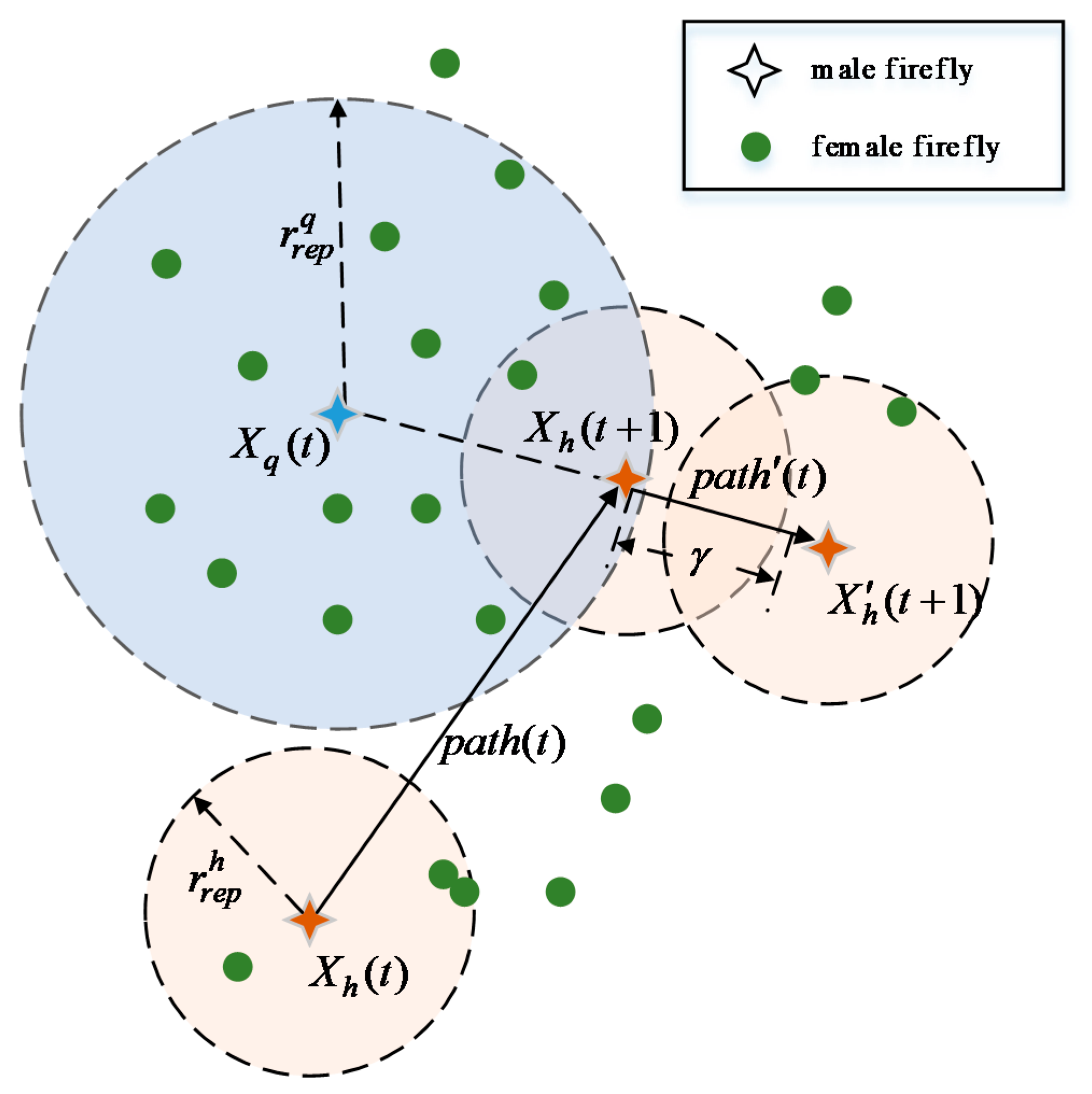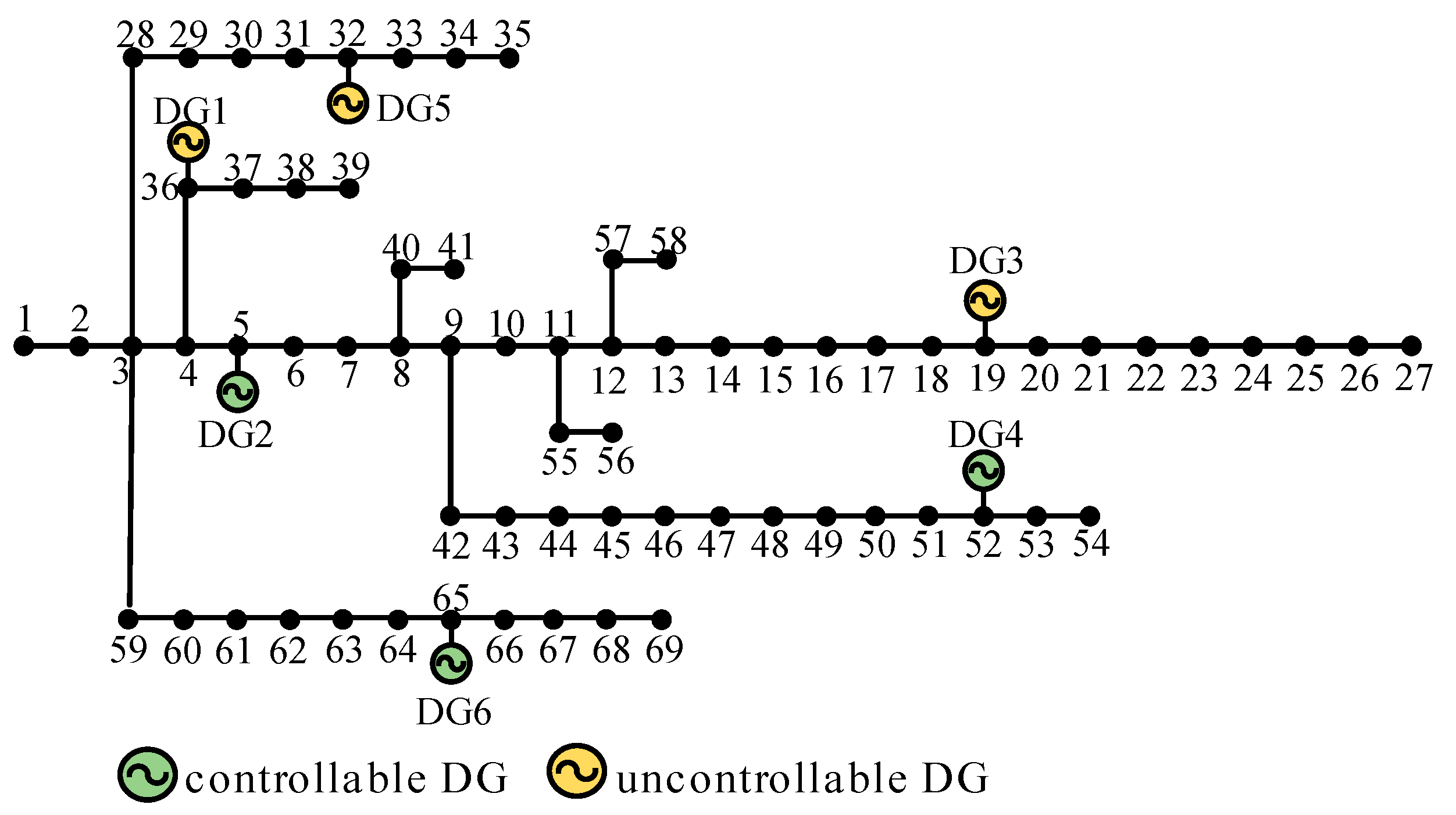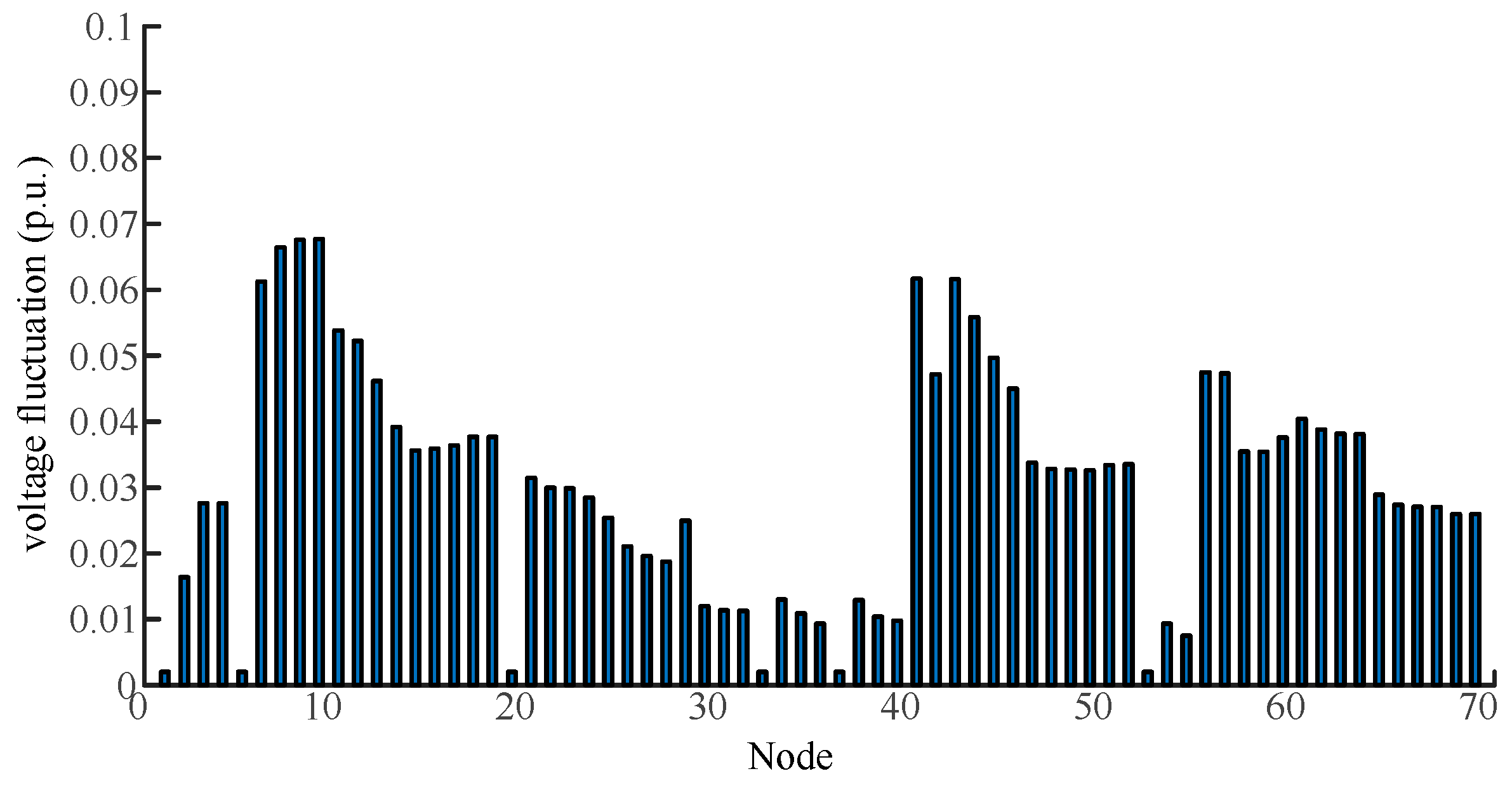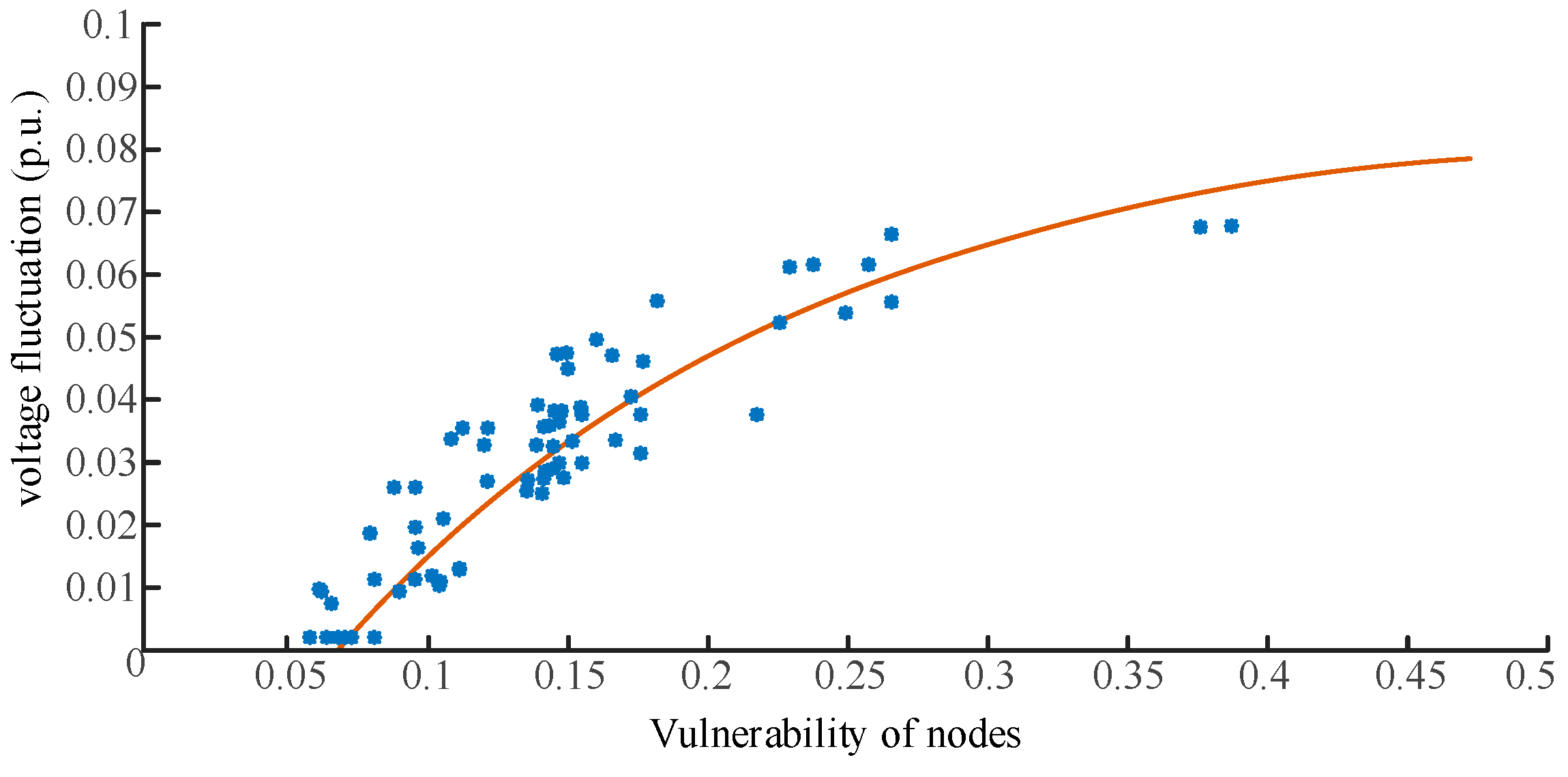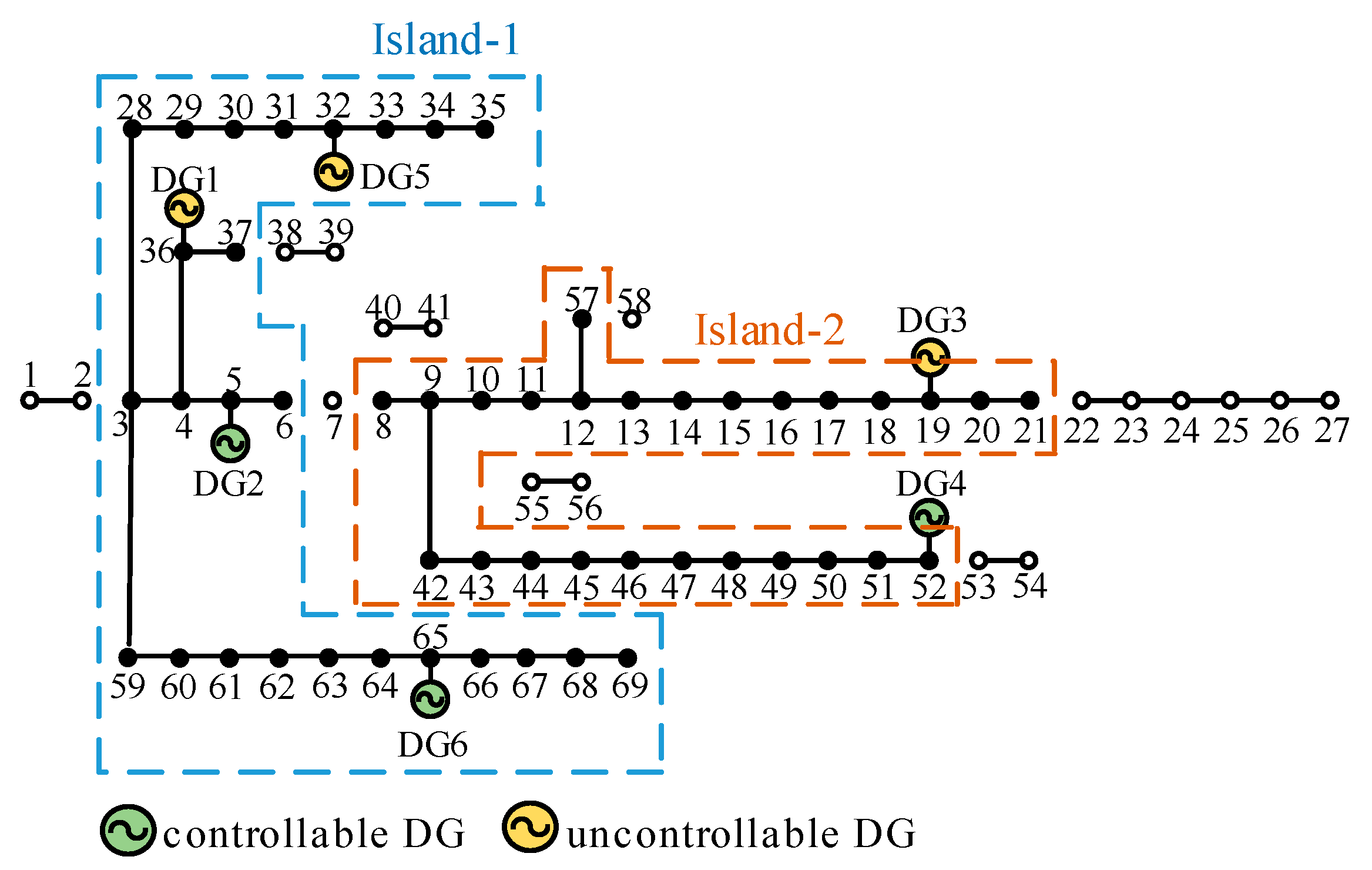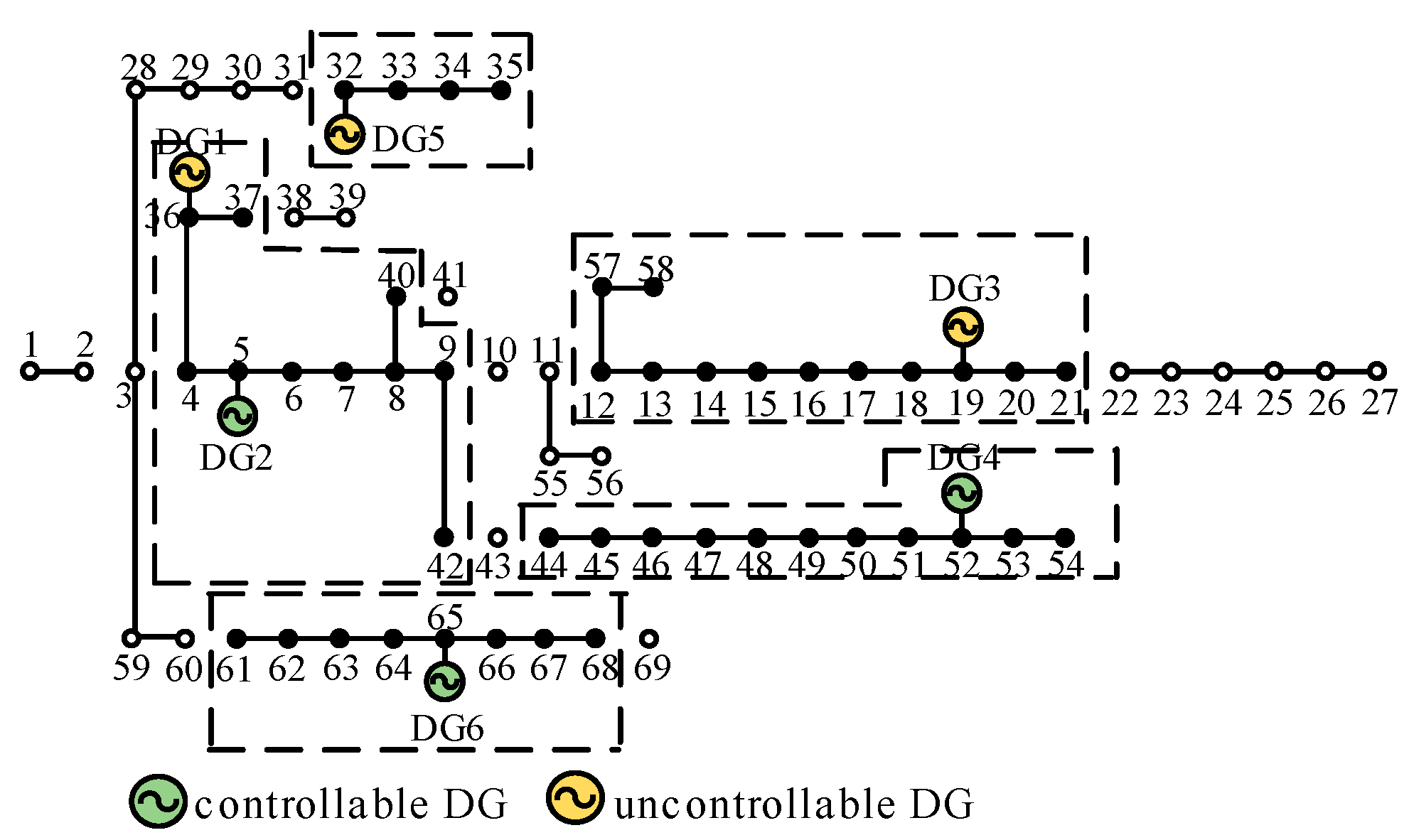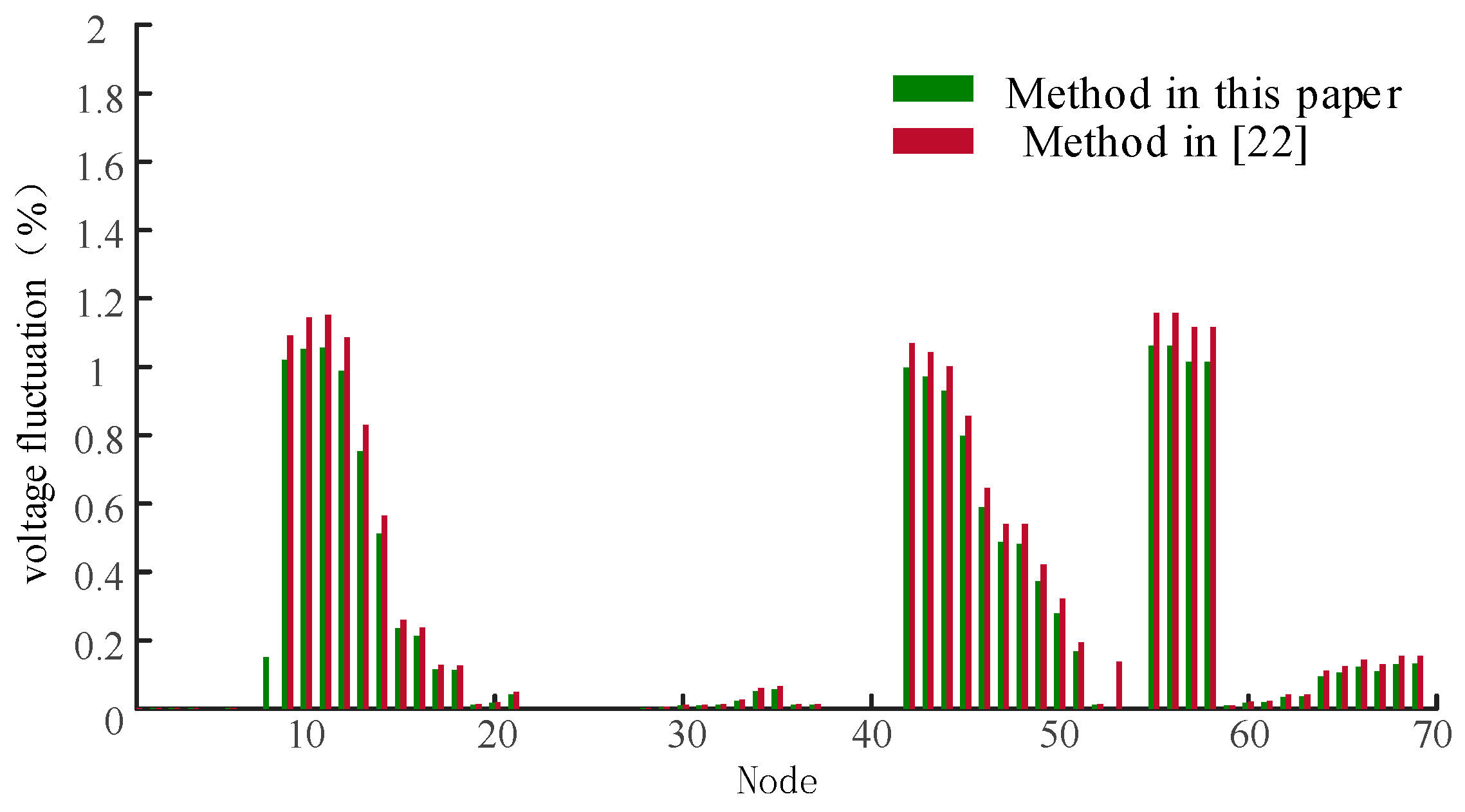The goal of island operation lies in maximizing the power supply capacity of the distribution system, isolating vulnerable nodes for protection, and reducing a secondary fault caused by the transient fluctuation of vulnerable nodes upon power supply restoration in the case of a fault of the distribution system. In ensuring the power supply, the loads of different grades have different influences upon personal safety and economic damage, so it is necessary to grade the load of the distribution system to ensure the supply reliability of important loads in priority and lower the influence of blackout upon social activities. According to constraints, like generator operation condition, power supply and demand balance, and controllable load proportion when the distribution system with multiple distributed generators operates in multiple islands, the island partition model is constructed as follows:
s.t.:
where
,
,
are primary, secondary, and tertiary load weights, respectively;
,
,
are primary, secondary, and tertiary load sets;
is the vulnerability index of node
; and
is the load active power of node
. Due to the different types of loads, the load nodes can be divided into two categories: an uncontrollable load set (
) and a controllable load set (
).
is a variable that defines the connection state of a load. When the load node
is uncontrollable, i.e.,
,
can only equal zero or one,
means the uncontrollable load node
is disconnected to any island, and
means the uncontrollable load is connected to some island. For a controllable load node, i.e.,
, the value of
, which dependents to how much load is restored, is alterable. Assuming that node
is on the route (
) connecting node
and node
, and node
is a generator belonging to the node set
in the
island. Constraint (9c) ensures that there is always a route connecting to the generators inside the island for any load node therein, namely the connectivity constraint of the island node.
is the power output value of the generation at node
, and constraint (9d) ensures power supply and demand balance between the generator and the load after island partition.
and
represent the minimal and maximal values of the generation output power. Given that uncontrollable generators (PV, wind generator) cannot independently supply power for loads, constraint (9f) ensures that there is at least one controllable generation unit in any island. Considering the fluctuation and randomness of uncontrollable generators and loads after island partition, the power margin coefficient of controllable generators is set as
in constraint (9g), to allow controllable generators to conduct real-time tracking compensation for power fluctuation in the island.
is the output value of controllable generation at node
, and
is its maximal value of generation output power. Constraints (9h) and (9i) are, respectively, the branch voltage constraint and capacity constraint in an island.
and
are the minimal and maximal values of the branch voltage between nodes
and
.
and
are the minimal and maximal values for branch power transmission capacity.
According to [
17], standby power in an island is the sum of 3% of the local load and 5% of the uncontrollable generator power:
where
is the output power of the uncontrollable generators,
. Equation (10) constrains the relationship between all generation unit power and load power at the time of island partition. Given that the right side is identically greater than, or equal to, 0, it also plays the role of ensuring power supply and demand balance within the island. Converting Equation (10) to obtain the power constraint of controllable generators:
Equation (11), in considering the dynamic changes of power for load and uncontrollable generation units within an island, ensures that there will be no insufficient power supply-caused transient fluctuations in the island operation through superposing the power gain coefficient before islanding the load and uncontrollable generators (making an increase of 3% in load power and a decrease of 5% in uncontrollable generation output as the ultimate state of system operation to calculate the minimal standby power margin for controllable generators).
In addition, because the operation mode of the distribution system with multiple distributed generators after island partitioning is similar to a microgrid, it can be considered to adopt a microgrid island operation generation control mode (such as
V-f control) to realize the transient stability of loads within the island. Combining the above factors, equipment parameters, like line capacity, are not considered. Then the island partition model can be simplified as:
s.t.:
In Equation (12), the generation constraint conditions in Equation (9) are simplified through calculating the power supply and demand relationship between controllable generation, uncontrollable generation and load, as well as power margin conditions. Through further setting , it can be seen that . Therefore, while ensuring dynamic power balance in independent operation after island partitioning, constraint (12d) contains at least one controllable generation unit used for dynamically balancing the power supply and demand relationship.
